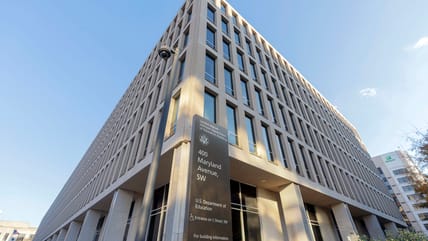A little over a month after significant layoffs at the Federal Student Aid office in the Department of Education, the Trump Administration has announced that collections on defaulted federal student loans will resume next month.
Beginning on May 5, the Department of Education will restart involuntary collections of federal student loans through the Treasury Department’s offset program after a five-year pause, since 2020, initially introduced by the Trump Administration. Further, after a 30-day notice, the department will also begin garnishing wages for borrowers in default.
The announcement arrives as more than 42.7 million individuals in the country owe federal student loans totaling over $1.6 trillion in debt, and a disproportionate amount of them happen to be Black. In the U.S., for those Black people with bachelor’s degrees, 83% of them have federal loans, according to data by Education Data Initiative. The research organization has also found that Black borrowers—who are already subjected to higher rates, on average, within the first four years of graduation—tend to owe more than they originally borrowed. They also tend to owe roughly $3,800 more than their white counterparts.
The announcement arrives when there has already been so much whiplash around the messaging regarding student loans. There’s a lot of confusion and questions about what happens next, who specifically this impacts, and what, if anything, can be done to avoid wage garnishment.
Before you rush to panic, take a deep breath. The explainer below answers all your questions, including whether the Department of Education and Federal Student Aid are still a thing.
What does this mean?
Point blank, if you have federal student loans that have defaulted—as in you missed too many payments, so your account was sent to debt collections—those collections will resume, starting on May 5; federal student loans default for borrowers who don’t make payments for nine months or more.
Collections for federal student loans, including those in default, have been on pause since 2020 to help provide ongoing relief during the COVID-19 pandemic.
I thought the Biden Adminstration canceled student loans…
We wish! Unfortunately, despite several attempts, the Biden Administration was unsuccessful in passing any form of sweeping federal student loan forgiveness.
How do I know if this impacts me?
The temporary pause on federal student loan payments has been lifted since October 2024. If you are unsure of your loan’s status, you can find out by logging into your StudentAid.gov account using your FSA ID. If it’s been a minute, as it has been for many, you can set up new login credentials after the necessary verification.
Since collections are beginning again for the first time in five years, it’s also advisable to update any, and all, contact information so you do not miss crucial communications the department or collections may try to initiate.
Will the recent FSA and DOE layoffs impact repayment?
The short answer: Yes. AP News reported that the recent layoffs have certainly made it “harder” to have questions answered regarding loans and possible repayment plans. Bearing this in mind, expect to have to employ some patience when reaching out. It may require more than one attempt.
What’s the first step I should take if my loans are in default?
The absolute first step is to refamiliarize yourself with your student loan account. Find and update any necessary logins and update any contact information. Then set up a repayment plan or even establish a one-time rehabilitation plan to get the loan out of default. Loans are no longer in default after a certain number of on-time payments have been made.
How do I avoid my wages being garnished?
Begin making payments again and/or establish a repayment plan. According to NPR, borrowers who are in default can expect to hear from the department beginning next week, urging them to either make a payment or set up a repayment plan.







